Top 10 Wailea Beaches and Snorkeling Spots
Last Updated: September 2025
Last Updated: September 2025
Wailea and nearby Kihei are home to some of the most beloved beaches and snorkeling spots on Maui. Stretching more than six miles along the island’s sunny southern coastline — from Maalaea Bay down to the entrance of Wailea’s luxury resort area — this region is a paradise for beachgoers. Kihei, just 20–30 minutes from the airport, offers a lively mix of condos, resorts, restaurants, and of course, plenty of sandy shoreline. With its popularity, though, Kihei’s beaches can get busy, which is why many visitors head a bit farther south to Wailea.
Wailea’s beaches are famous for their beauty and ideal snorkeling conditions. Thanks to the area’s dry, sunny climate and shelter from Maui’s trade winds, the water here is often calm and crystal clear well into the afternoon. Many of the coves are protected year-round, creating excellent visibility and safe entry points for snorkeling. Add in vibrant coral reefs, abundant marine life, and quieter stretches of sand the farther south you go, and it’s easy to see why Wailea is one of the island’s premier destinations for both snorkeling and sunbathing.
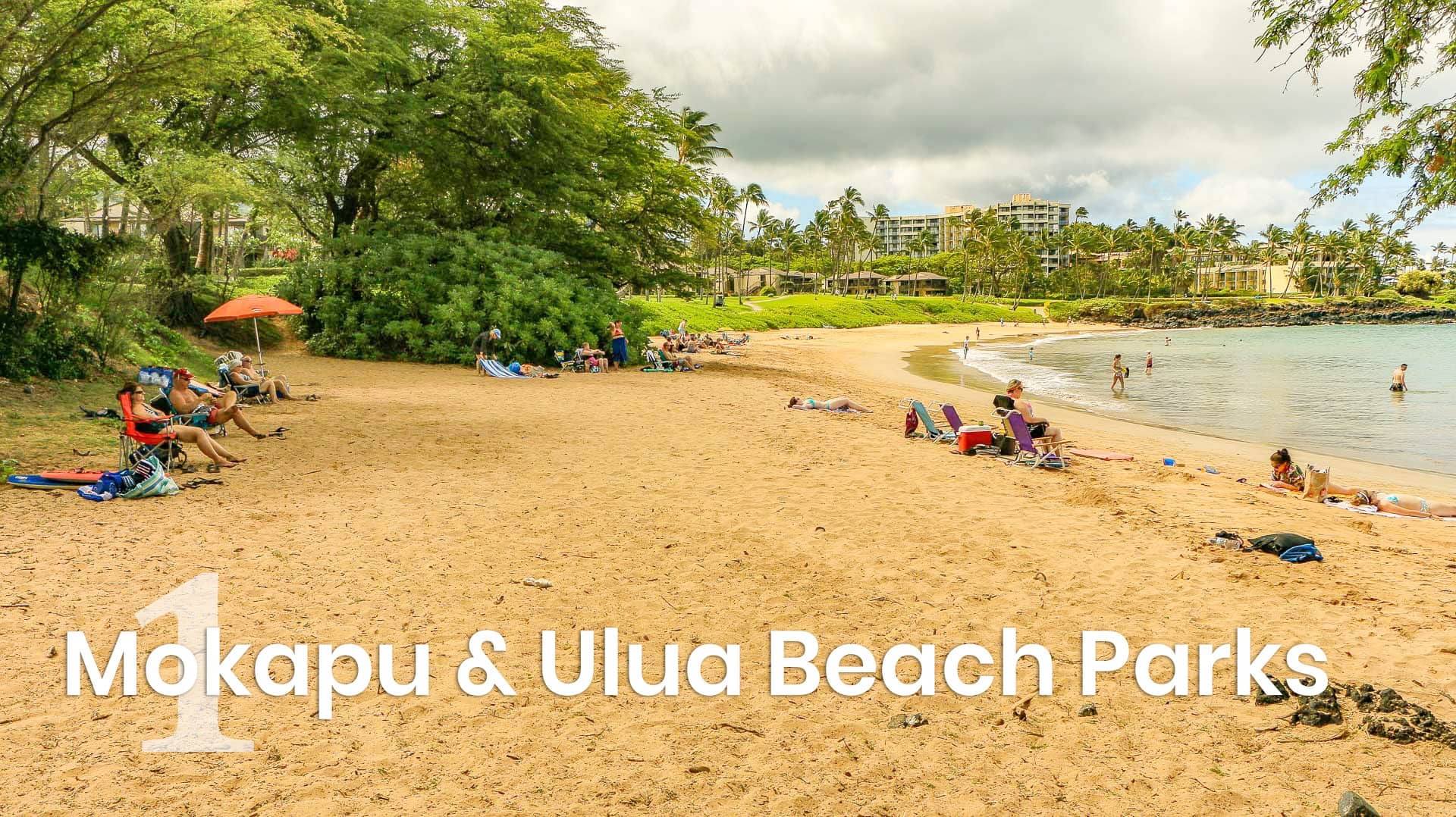
Located between Andaz and the Wailea Marriott, these two beaches (there is one entrance from the road for both) are well known for their snorkeling and diving habitat. The first beach on the north (right) side, Mokapu, has shallow reefs perfect for snorkelers. The second, Ulua, is well known as a dive spot for beginners and their instructors. The deeper reef at Ulua beach supports a turtle cleaning station were small reef fish pick the turtle’s shell clean.
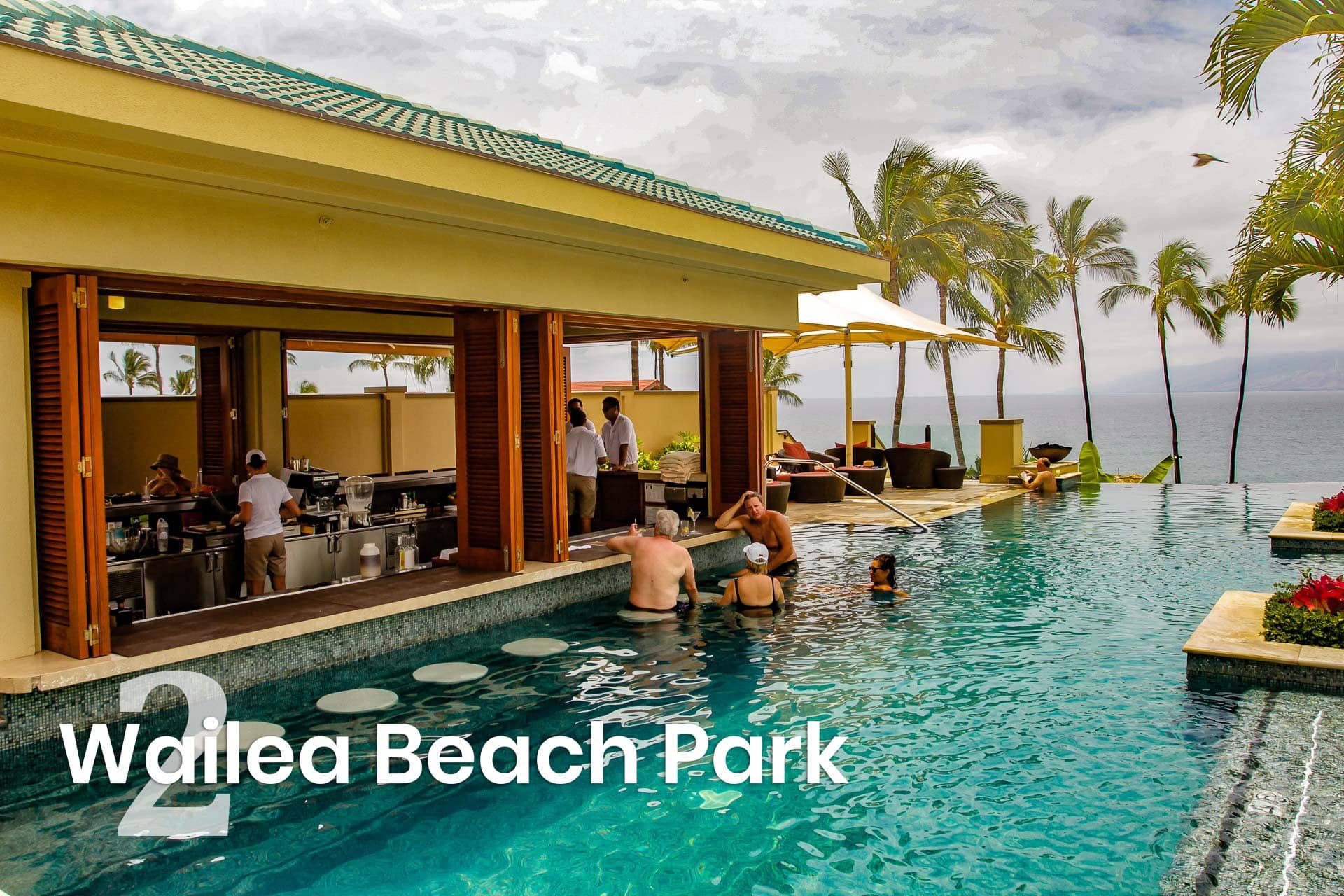
Fronting both the Grand Wailea and the Four Seasons Resort, this beach is the crescent shaped jewel in the crown of two 5-star, world class hotels. Since all beaches in Hawaii must allow public access by law, you could find yourself sitting next to celebrities enjoying the sun and ocean along this magnificent beach. Snorkeling and kayaking are popular at Wailea Beach Park and in the evenings you can watch the Grand Wailea Luau from the beach during sunset.
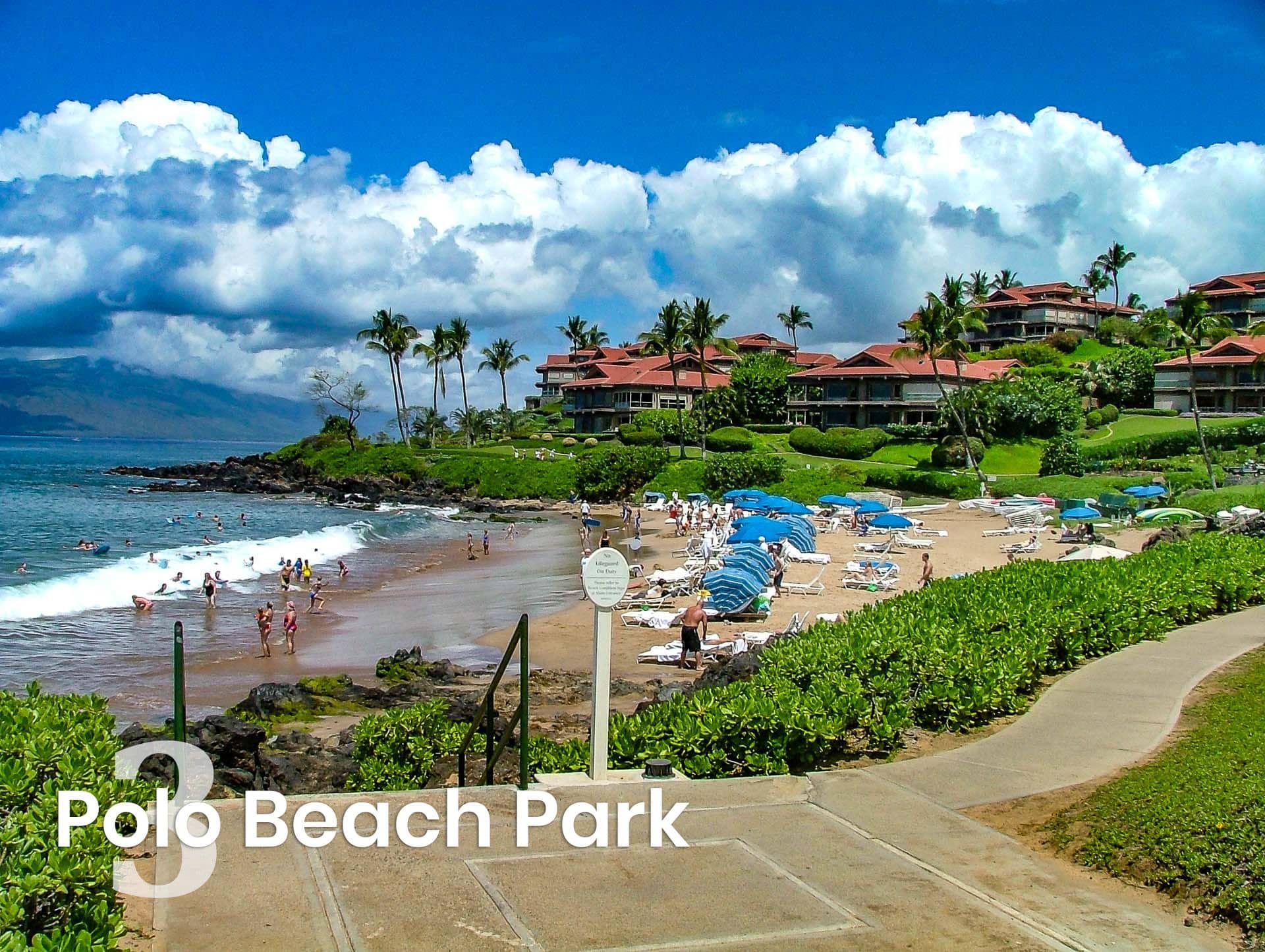
The Polo Beach Club Resort was one of the first hotels built along this beautiful pair of crescent-shaped beaches back in the 1980s. Sitting at the southern end of the beach, it’s joined on the northern end by the Fairmont Kea Lani Resort, built in 1991 and impressively renovated with a $70 million upgrade in 2015. Today, this stretch is considered one of Wailea’s most picturesque, with snorkeling access right off the sand. Small lava peninsulas frame both ends of the beach, each teeming with colorful coral and an abundance of marine life.
The original name of the beach is “Ke One o Polo”, meaning “the sand is not thick”. This refers to the sharp lava rocks just beneath the surface, so take care when entering the water. The northern end, in front of the Kea Lani, has a soft sandy bottom but can get busy with resort guests lounging in chairs and cabanas. The southern end is quieter and offers a beautiful reef for snorkeling.
You can snorkel around the rocky points on either end in calm seas but during large swells it’s possible to get tossed into the rocks and dangerous rip currents are known to form near the beach. As we say in Hawai’i: “never turn your back on the ocean” and “when in doubt don’t go out”!
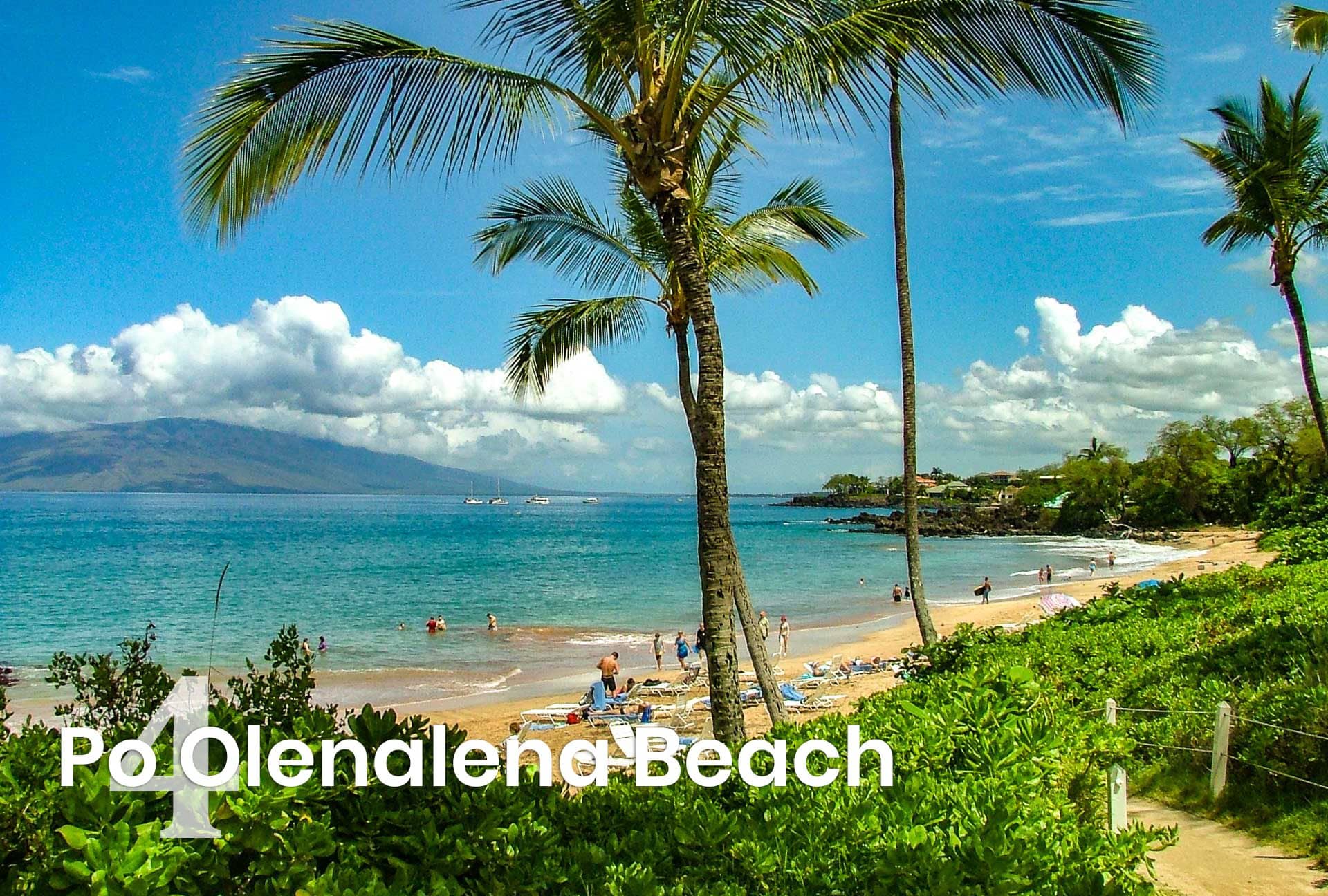
This beautiful long sandy beach has three rocky points that are full of marine life. It’s easy to spot turtles cruising through these healthy reefs. The rocky snorkel spots are at both ends (as usual around Wailea) with one also in the middle.
Also known as Paipu Beach, this beach is a favorite of local families. Residents bring their keiki (children) to play in the surf on the weekends but it often remains quite during the weekdays.
It has become a popular place for weddings and photographers as the sunsets here can be spectacular! Boogie boarding and body surfing is also excellent here during south swells and it’s gently sloping sand bottom is great for kids and beginners on calmer days.
On bigger surf days caution is advised as the center rock outcropping can become obscured by wave action and rip currents can be strong during storms.
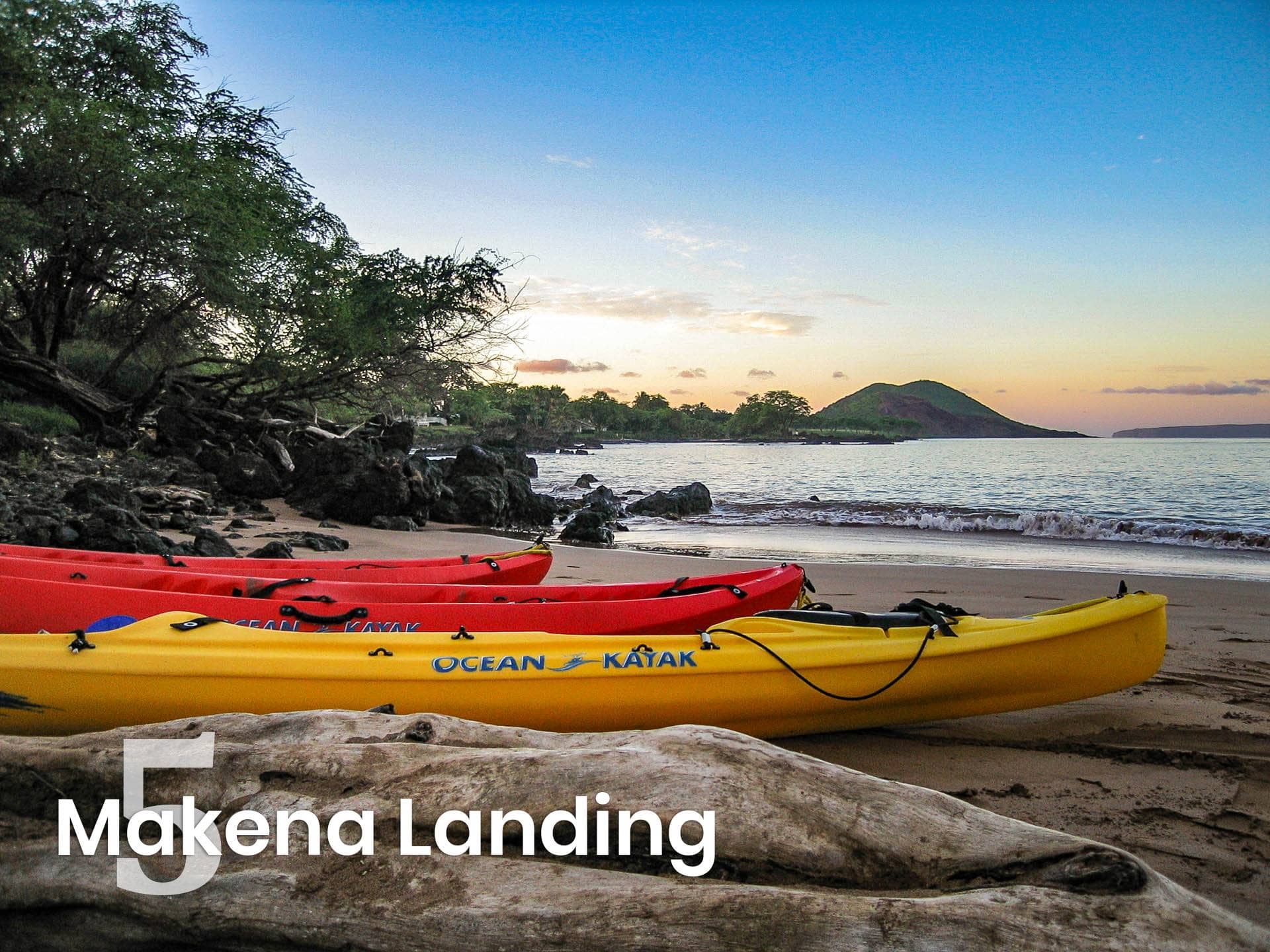
Makena landing is a popular entrance point for wide range of ocean activity companies. There is not much of a beach here but it makes for an easy sandy entrance to this large shallow bay. It is a perfect location for beginner snorkelers as well as kayakers, divers and stand up paddle boarders. The bay is typically calm and sheltered from the winds making for a excellent place to snorkel or start an ocean tour.
To the right of the bay extends a lava rock shoreline that forms Nahuna Point, home to underwater sea caves, arches and most notably Turtle Town, one of the largest turtle cleaning stations on the island. Turtle Town is a bit of a swim off shore so many choose to snorkel here from a boat or off of a kayak. This is another reason tours launch from here but there is plenty to see within the bay itself.
The bay is home to a vibrant coral reef teaming with butterfly fish, eels, turtles and harmless reef sharks. The underwater topography off shore of Nahuna Point is known to scuba divers as Five Caves, Five Graves, Turtle Town and Turtle Arches. With that many names you know its a popular place and it can get crowded with tour groups during the day. Its best to get here early or wait till later in the day.
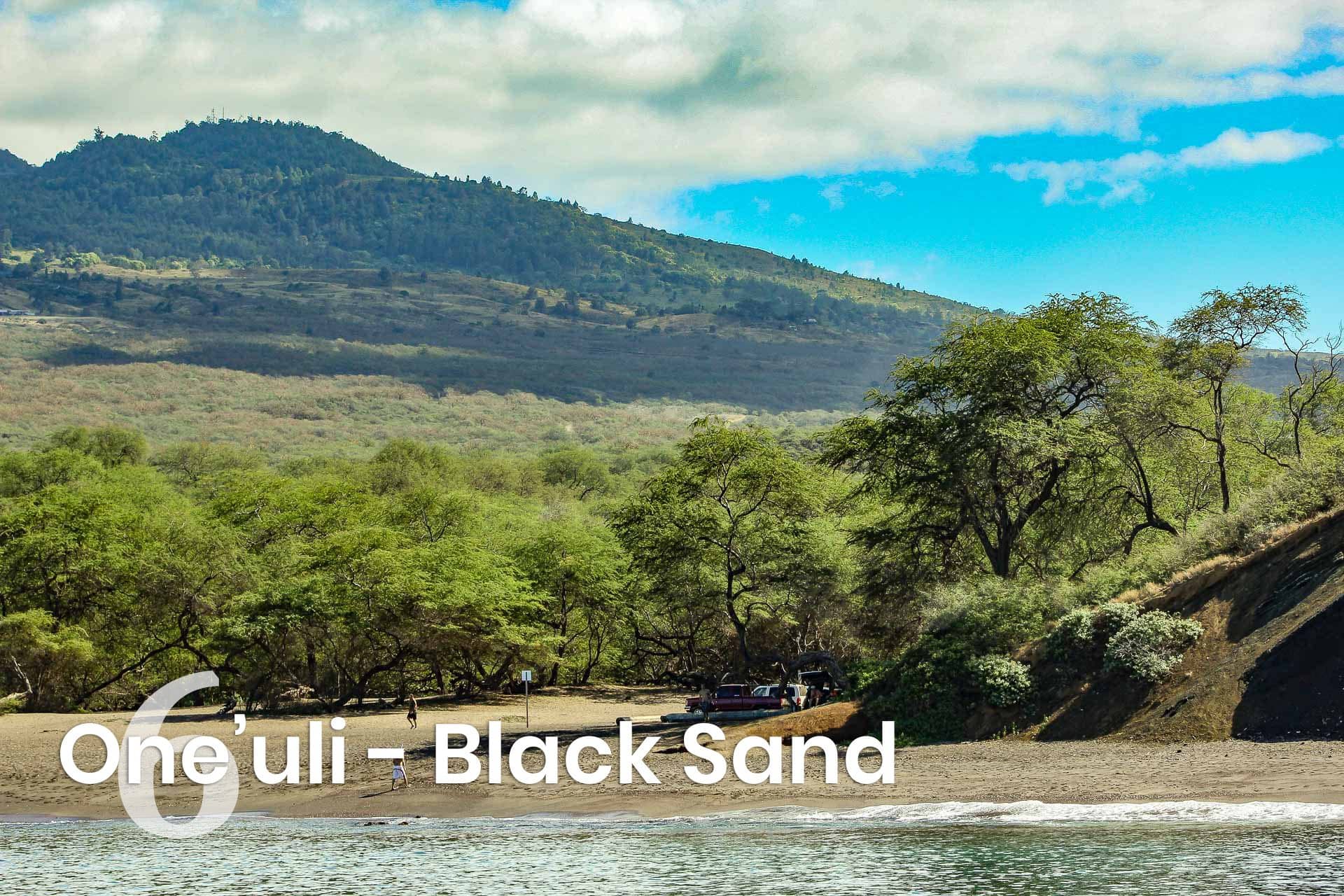
Located down a dirt road, One’uli is one of Maui’s few black sand beaches (the most famous being Hana’s black sand beach), though it is more of a reddish grey than black. This is because of its location next to a 360 ft high cinder cone called Pu’u Ola’i, on the southern (left side) of the beach. The towering cinder cone has its geological history laid bare in the eroded cutaway cliffs facing the beach and ocean.
One’uli beach is unlike the typical beaches of the area whose light colored sand is made up of ocean ground coral. This beach’s sand is made up of ocean ground lava and its color is a blending of the steep layered colors of the loose cinder.
This quiet and uncrowded beach off the beaten path is not that popular for sunbathers or swimming as the sand abruptly disappears at the water’s edge, becoming hard lava rock. However the snorkeling is wonderful as the lava is covered in elaborate corals close to shore. The abundant sea life in this coral attracts many varieties of fish including green sea turtles and even the occasional endangered Hawaiian Monk seal which has been seen lounging on the beach here.
There is a trail that leads to the top of the cinder cone but it is a steep and strenuous hike in a mostly hot and dry area. It’s a sweaty climb but with spectacular views of south Maui at the top.There are no lifeguards or water to be found here so be careful and come prepared. Large ocean swells that come from the south can also create rough surf here so be aware as the lava rocks are sharp and often unseen in the waves.
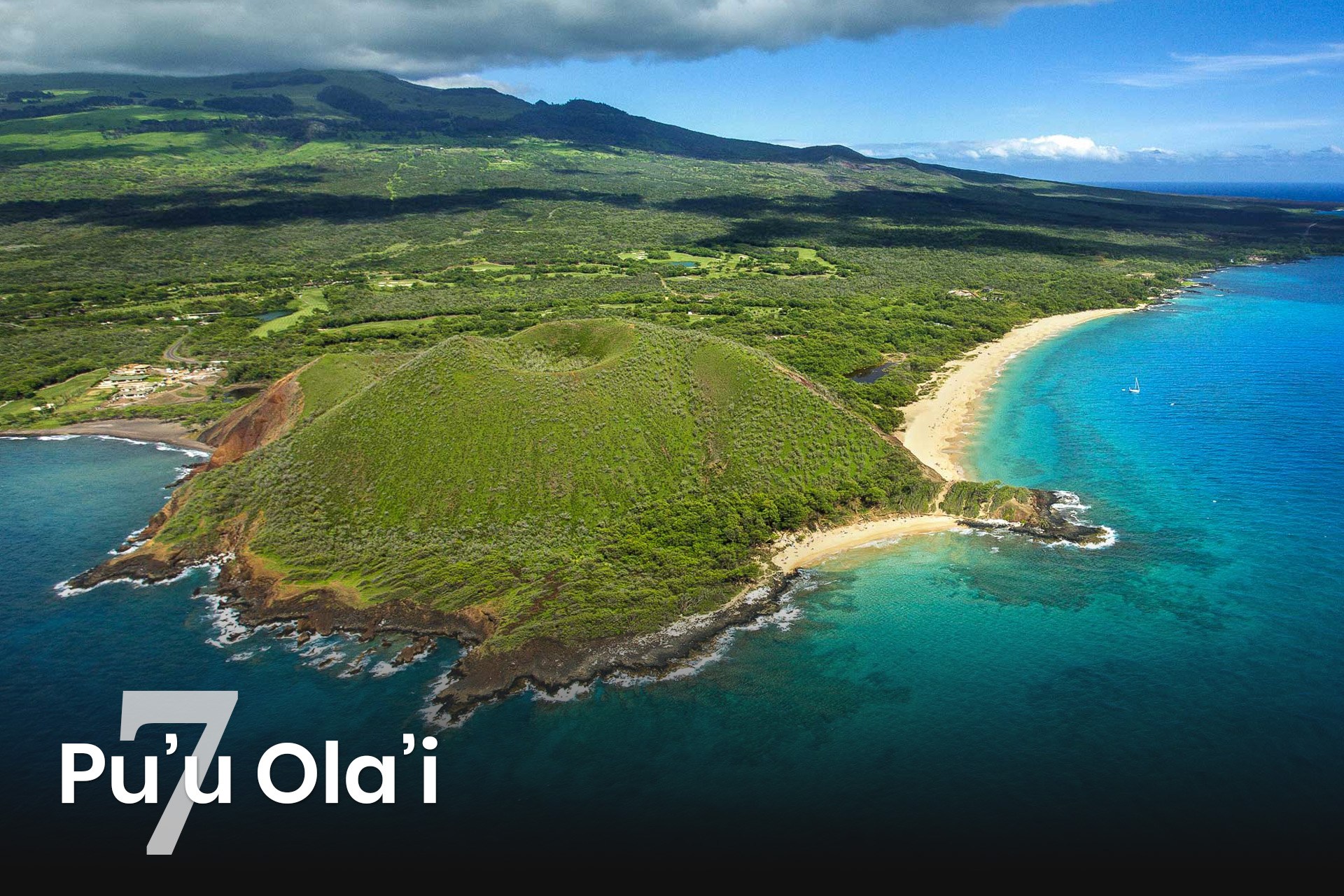
The cinder cone Pu’u Ola’i means “earthquake hill”. Mo’olelo (oral hawaiian history) speaks of this cinder cone’s explosive formation happening in less than a week, estimated to have taken place sometime in the mid 1700’s, making it the next to last place Haleakala volcano erupted. The last eruption was just south of here above Ahihi Kinau Reserve and La Perouse Bay.
Pu’u Ola’i is at the edge of the Maluaka Wetlands and a restoration projects of the North Pu’u Ola’i Wetlands is under way. The project includes restoring the fishpond not far from the beach. Signage has been installed in the parking area explaining about the protected area and the endangered birds you may see here.
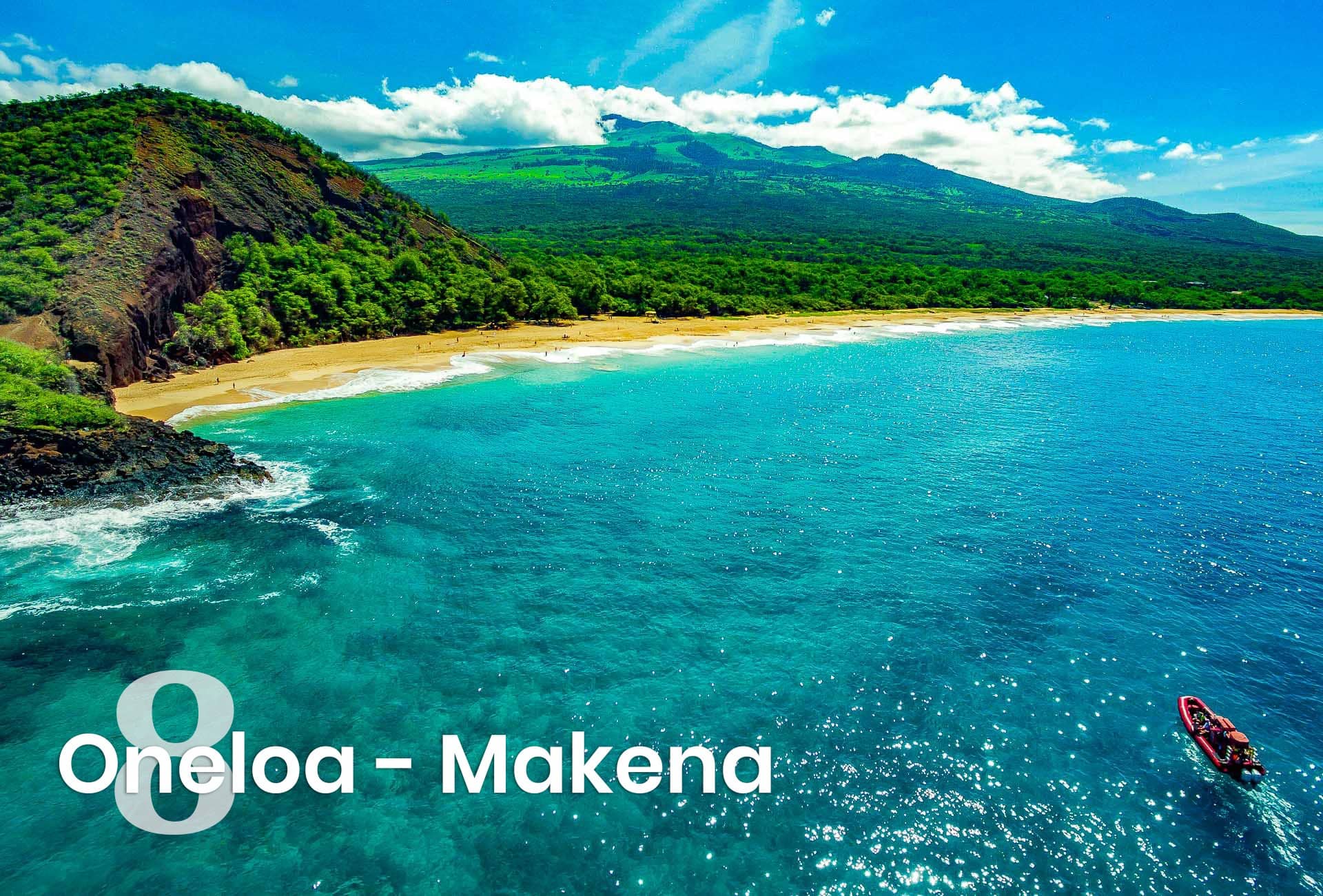
Known on the island as “Big Beach”, Makena is the largest continuous stretch of beach on the island at over a mile long and over 100 feet wide (this is quite wide by Maui standards). Narrow roads lead to three parking areas that are at both ends of the beach with one in the middle. The first parking area is closest to the cinder cone Pu’u Ola’i who’s lava outcropping here can be climbed over to access “Little Beach” – Maui’s remote nude beach.
There is not much in the way of snorkeling at this mile long beach as the bottom is sand and the rip current is strong. The sand drops steeply into the water here making for a brutal shore break as the waves jack up and close out onto bare sand. This is never a beach that is safe for small children or inexperienced swimmers. Even if you are a good swimmer you may want to think twice about swimming here during high surf. Many broken necks and bones have occured here over the years, even among the experienced locals.
If you venture up and over the outcrop to little beach at the far northern (right side) of Big Beach you may find some great snorkeling at the edges of this cove on calm surf days. Rock outcroppings on either end of this beach have beautiful coral heads with lots of marine life living in this undeveloped and remote part of Maui’s waters.
It’s also quite entertaining to watch resident kids play in the shore break at Big Beach. Skim boarding and boogie boarding are popular here but keep in mind the locals know how to kick out of these waves before they become smashed into the sand. The beach is so large that there is plenty of space to spread out even on what looks like a busy day.
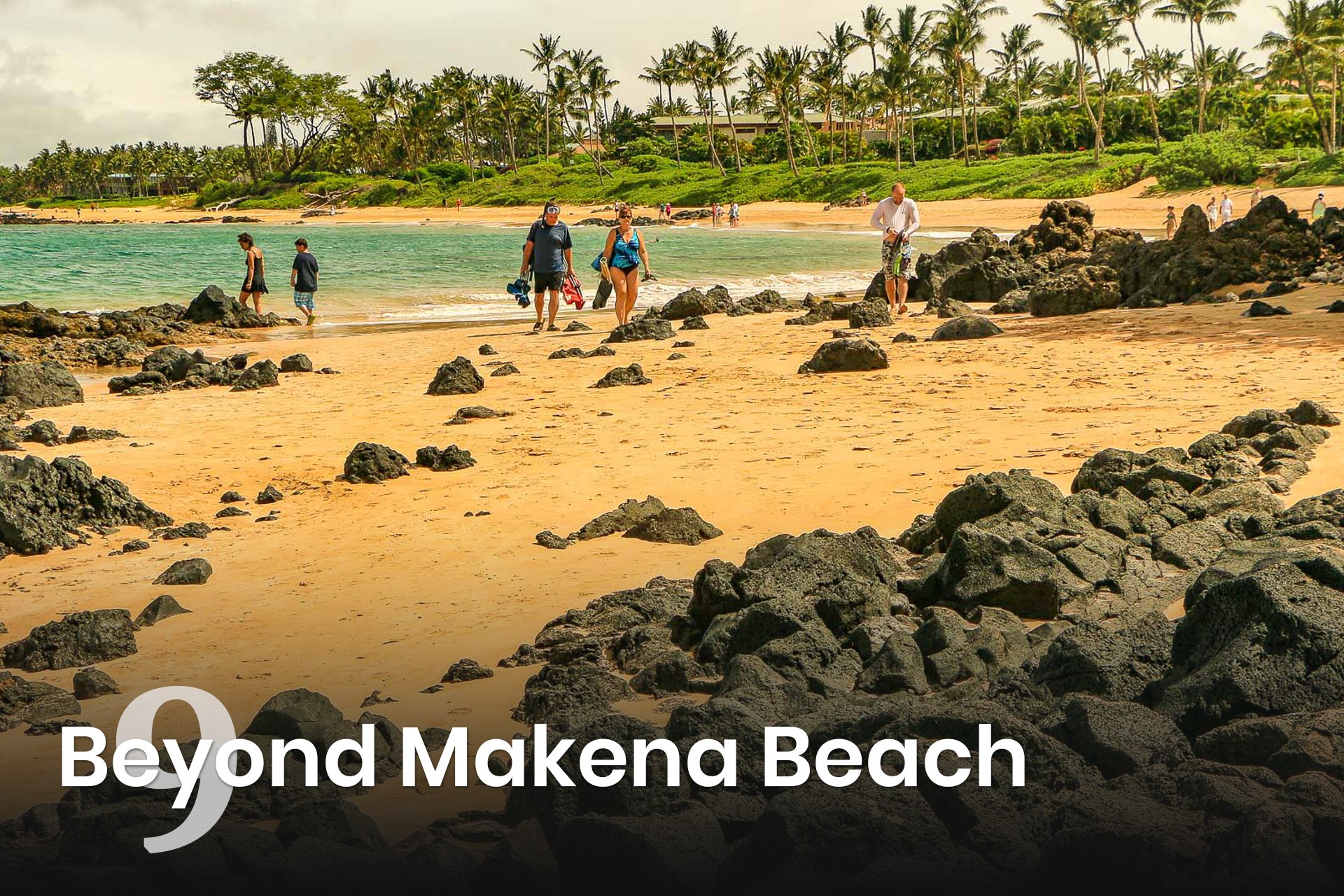
Just past the Big Beach parking areas lies a hidden gem tucked behind a lava rock wall: a small beach locals often call The Cove. While it’s famous as a wedding backdrop — and you’ll often spot couples, photographers, and ceremonies here around sunset — it’s also a rewarding snorkeling spot if you arrive earlier in the day. The Cove offers easy ocean access and is a favorite hangout for green sea turtles gliding through the shallow reef of this rocky inlet.
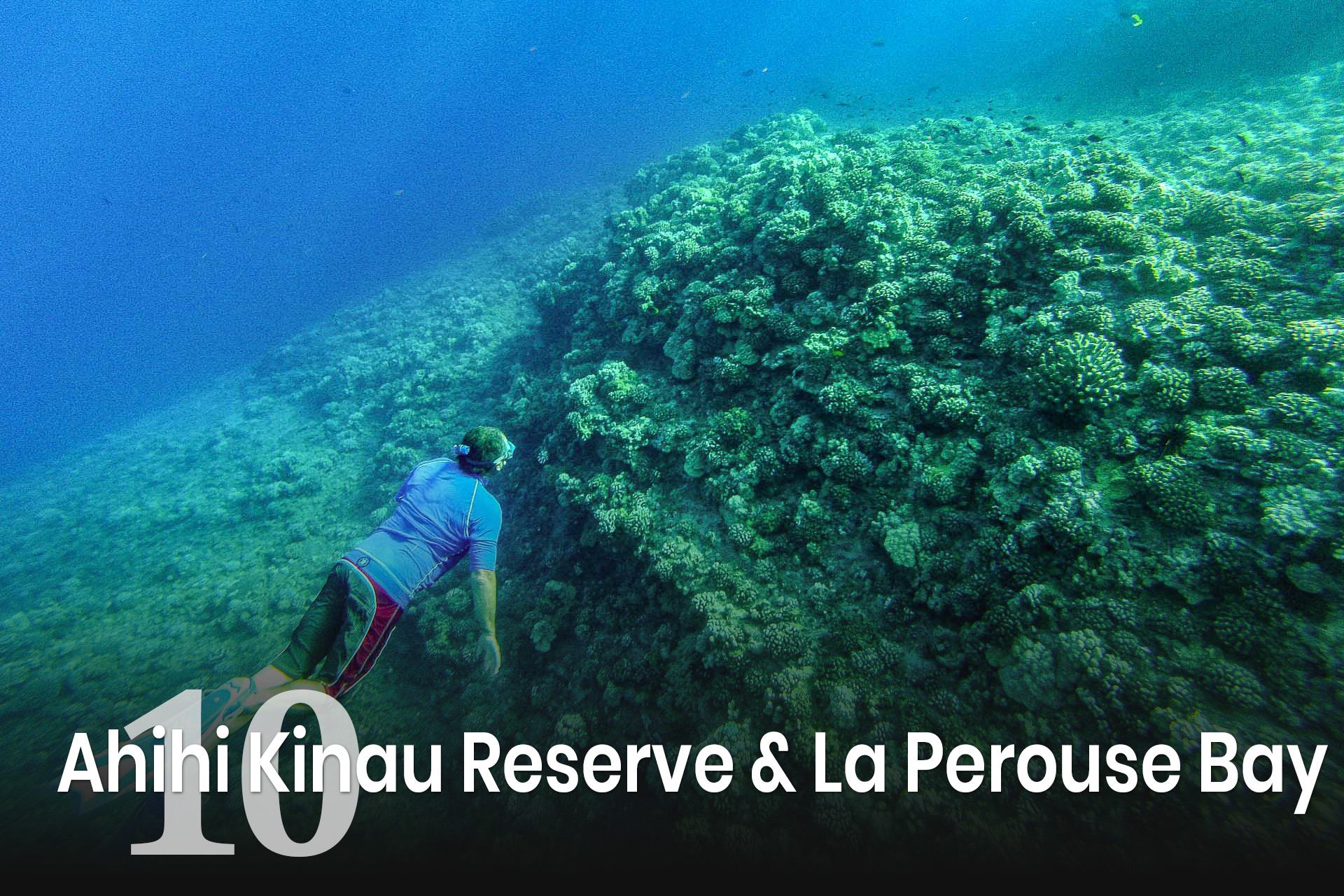
Continue driving farther down the road and you’ll reach one of Maui’s most rugged and protected coastlines: the Ahihi-Kinau Natural Area Reserve and La Perouse Bay. The volcanic landscape here is striking — lava fields spilling into the ocean, creating a dramatic shoreline. Snorkelers are rewarded with incredibly clear waters, diverse reef life, and, if you’re lucky, the unforgettable experience of swimming near spinner dolphins
Yes, Wailea Beach is an excellent spot for snorkeling in Maui. Its calm waters, vibrant coral reefs, and diverse marine life make it a popular destination for snorkelers of all levels. You can expect to see colorful fish, sea turtles, and other fascinating creatures.
While Wailea Beach is a fantastic choice, Ulua Beach is often considered to have the best snorkeling in Maui. Its crystal-clear waters and abundant marine life make it a true underwater paradise. However, Wailea Beach offers a more relaxed and family-friendly snorkeling experience.
The best time to snorkel in Maui is during the summer months (May to September). The water is typically calmer and clearer during this period, providing optimal conditions for underwater exploration.
Yes, you can swim on Wailea Beach. It’s a popular swimming spot, especially for families. The calm waters and gentle waves make it safe for both adults and children.
The best snorkeling in Wailea is usually found around the rocky points and lava outcroppings along the coastline. These areas create natural habitats for coral reefs, tropical fish, and sea turtles. Popular spots like Ulua Beach, Polo Beach, and The Cove offer easy access and great visibility, especially in the morning.
Be sure to pack the essentials: quality snorkel gear, water shoes for navigating rocky entry points, reef-safe sunscreen, a hat, and a towel. If you want a more guided experience, consider booking a local snorkel tour. Guides can provide gear, share insights about the marine ecosystem, and take you to hidden snorkel spots you might miss on your own.
Wailea is home to some of Maui’s most breathtaking beaches — each with its own personality, charm, and snorkeling opportunities. From family-friendly stretches of sand with calm waters to tucked-away coves where turtles drift through the reef, there’s truly a beach for every type of visitor. Whether you’re planning a romantic getaway, a family adventure, or an active day exploring Maui’s underwater world, Wailea delivers a perfect blend of beauty and variety. Pack your snorkel gear, arrive early for the best conditions, and let the ocean show you why these Wailea beaches are some of the most unforgettable in all of Hawaii.